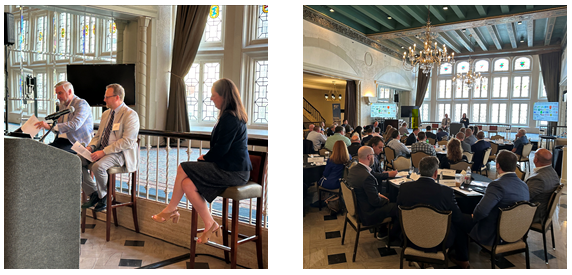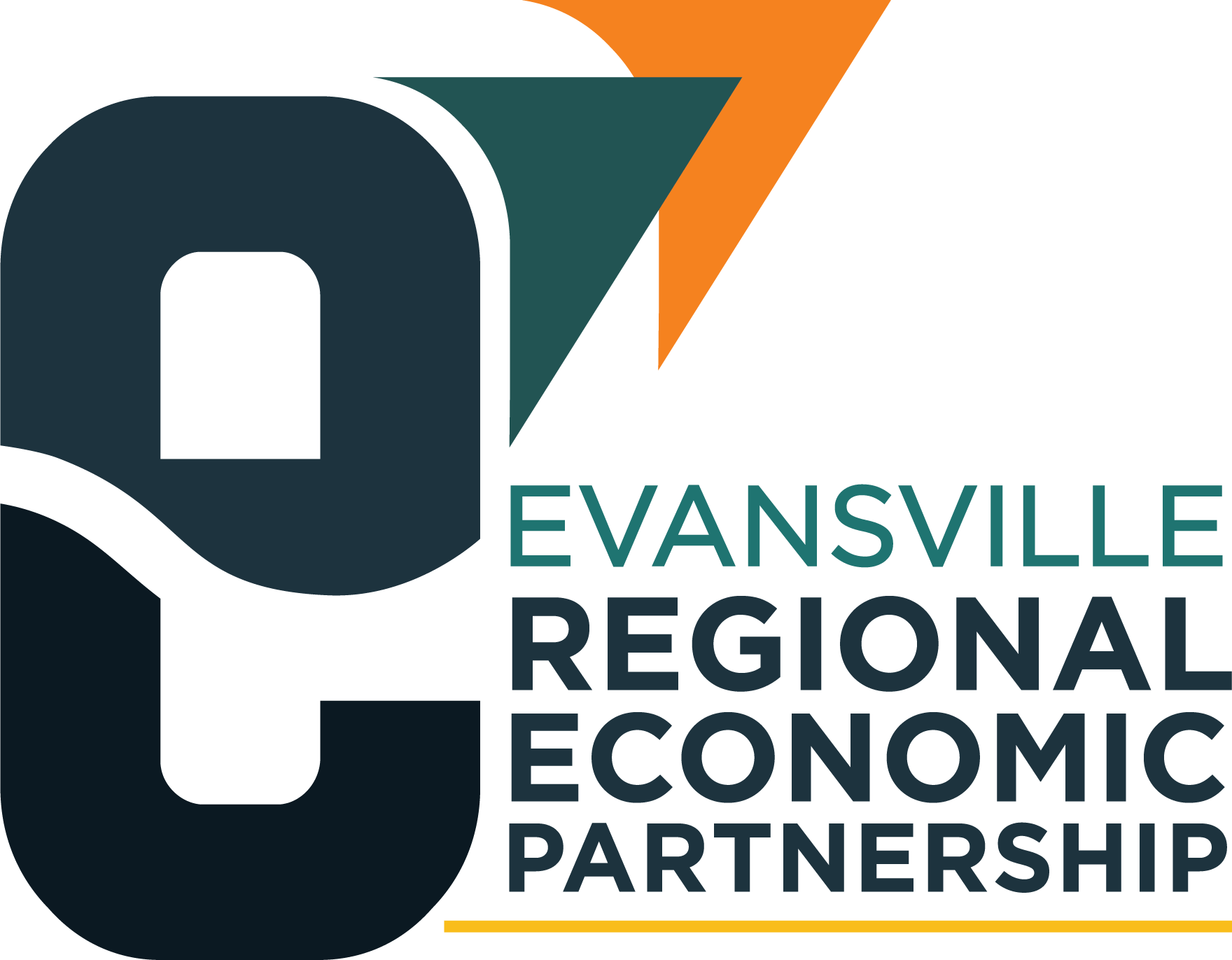Governor Holcomb joins Indiana container conference to discuss growing global trade, new container ports and agricultural exports

Governor Holcomb joins Indiana container conference to discuss growing global trade, new container ports and agricultural exports
Governor Eric Holcomb kicked off the first-ever Indiana Container Shipping Conference and Intermodal Rail Tour on June 17 as business, agriculture, and transportation leaders discussed ways to develop new container ports, grow agriculture exports and expand global trade.
Container shipping capacity has been identified as a key objective to support Indiana’s economic and agricultural growth, which led to the creation of this event hosted by Ports of Indiana, Indiana Soybean Alliance (ISA) and Indiana Corn Marketing Council (ICMC).

“I commend Indiana’s statewide agricultural sector and port leaders for convening this important discussion about growing Indiana’s global trade by expanding our international container shipping opportunities,” said Gov. Holcomb. “Our state has a proud Ag based heritage and an equally exciting future, led by specialized soybeans, corn and hardwood products that are coveted throughout world markets. Leveraging all our port, rail and transportation resources to expand our container shipping connections will strengthen our economy and create even more opportunities for Hoosier farmers, businesses and families.”
The conference included a tour of Indiana Rail Road’s Senate Avenue Intermodal Terminal and speakers from International Feed, S&P Global, POET, Pence Group, Cole Hardwood, Cargo Services, Indiana Rail Road, ISA, ICMC, and Ports of Indiana.
“Improving our infrastructure to support local containers terminals can provide Hoosier farmers with access to overseas customers,” said Courtney Kingery, CEO of the Indiana Soybean Alliance (ISA) and the Indiana Corn Marketing Council (ICMC). “Indiana corn and soybean farmers produce premium, value-added products but often lack easy access to international container facilities that offer efficient shipments of identity-preserved commodities to world markets,”
The development of shipping containers with standard dimensions supports efficient transport of a variety of goods in truck-sized containers. Standard containers are generally 8-feet wide, 8.5-feet tall and 20 or 40-feet long, with larger sizes available. Global standardization allows ocean vessels to stack and carry more than 20,000 containers per voyage to multiple countries around the world.
For Hoosier farmers, as an example, a container could be loaded locally with Indiana soybeans, get moved by truck to an intermodal railroad yard where it is loaded and carried to a seaport for overseas delivery. Through Ports of Indiana, local products have access to overseas shipping with two ports along the Ohio River, at Mount Vernon and Jeffersonville, and another port in Burns Harbor on Lake Michigan. Indiana has fewer container terminals than neighboring states.
Ports of Indiana is hoping to lead the development of new container terminals at its three ports, which already provide access to foreign markets for bulk and breakbulk cargoes. Indiana ports generate $8.7 billion per year in economic impact for the state and support 50,000 jobs. Ports of Indiana is undergoing a $100 million capital campaign that includes eight federal grants, five docks, three railyards, two cargo storage facilities, extensive cargo handling equipment and decarbonization planning.
“Container shipping represents a major new venture for Indiana’s ports,” said Ports of Indiana CEO Jody Peacock. “We don’t handle containers today due to regulatory and market challenges, but containers represent the highest-valued and fastest-growing cargo for ports around the world. By working with our state agriculture partners and many others, we hope to develop new container facilities that will allow Indiana to better connect with the global economy.”
Last week, the Ports of Indiana Commission approved a plan to launch “The Indiana Container Initiative” to develop multiple international container terminals. This initiative is designed to increase the organization’s efforts to pursue the development of international container facilities within Indiana’s ports and other locations throughout the state.
As it stands, the volume of corn, soybeans or farm commodities – as well as other raw commodities – that leave Indiana in containers is relatively small, said Ed Ebert, Senior Director for Market Development for ISA and ICMC. However, with the correct infrastructure in place, he believes Indiana could tap into already existing shipping routes.
“Shipping from Asia and China can play a significant role,” Ebert said. “China is a key player in the global container network. Containers with consumer goods leave major ports in China as well as Japan, South Korea and Southeast Asia destined for the largest consumer goods market in the world – the United States. When these containers are offloaded and emptied, they can ideally be loaded with U.S. soybeans to get hauled back to China and Asia.”
Kingery recently traveled to meet many overseas buyers and has identified the most desired agricultural products that Hoosier farmers produce, including specialty soybeans such as high oleic, non-genetically modified or food grade soybeans; specialty corn such as non-genetically modified or waxy corn; soybean and corn co-products such as distillers’ dried grain or ethanol; meat and poultry, such as eggs, turkey, duck and pork; and Indiana hardwoods.
“Ports of Indiana along with ISA and ICMC seek to expand the sale of specialty agricultural products exported in containers from Indiana to global markets,” Kingery said. “Stakeholders and potential supporters are gathering to explore funding opportunities and areas of cooperation to expand Indiana’s value-added commodity exports. The market potential of shipping to global customers could be up to 11,600 containers of $165 million in product value between soybean and corn commodities and co-products annually.”
Many agriculture and shipping stakeholders participated the meeting including: the Indiana Corn Growers Association, Cole Hardwood, POET, The Indiana Rail Road, Pence Group, S&P Global, the Indiana Economic Development Corp., the Agribusiness Council of Indiana, the Indiana State Department of Agriculture, the Great Lakes St. Lawrence Seaway Development Corp., Indiana Farm Bureau, The DeLong Co., Inc., International Feed Worldwide, CSI, Bose Public Affairs Group, Louisville and Indiana Railroad, Barnes and Thornburg LLP, IN Ag LLC, CSX, and Spliethoff.
